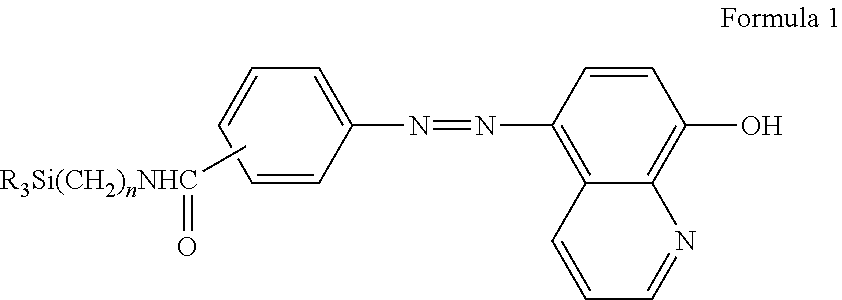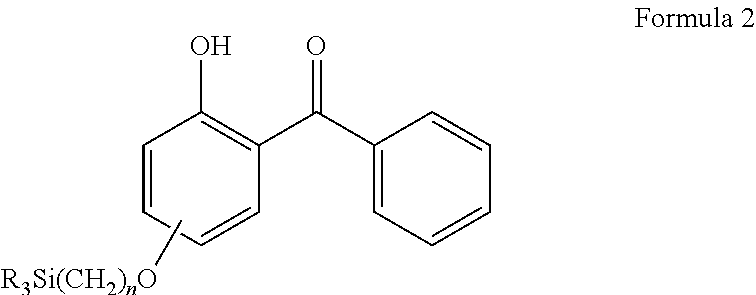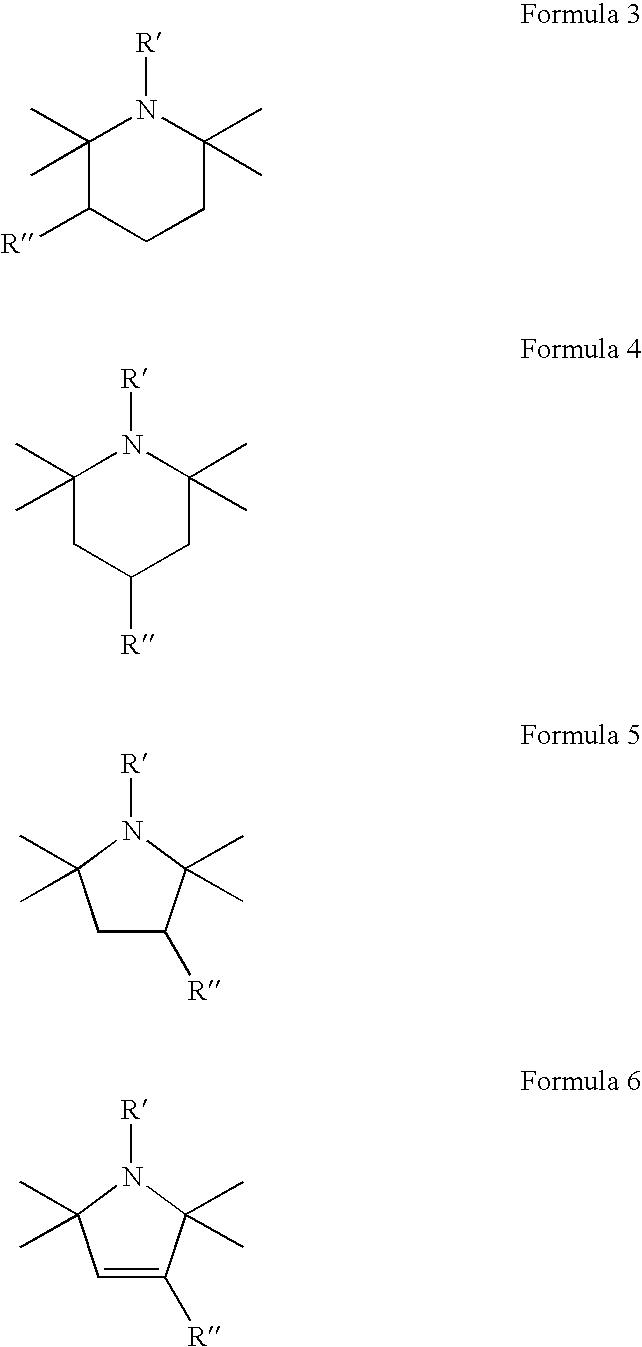Ink-jet media porous coatings with chemically attached active ligands
- Summary
- Abstract
- Description
- Claims
- Application Information
AI Technical Summary
Benefits of technology
Problems solved by technology
Method used
Image
Examples
example 1
Attachment of Active Ligand to Reactive Group Through Spacer Group
[0052]As illustrated by steps A, B and C below, the following reaction is carried out to attach an active ligand to a reactive group through a spacer group (forming a silane reagent). The present example illustrates the modification of a hindered amine light stabilizer, though other active ligands can also be modified likewise, or by other methods known in the art.
[0053]
example 2
Preparation of Ultraviolet Blocker-Modified Silica
[0054]About 40 grams of silica to be modified is dried overnight in a vacuum at about 110° C. to remove adsorbed moisture. The dried silica is then allowed to cool to room temperature. Next, about 500 ml of methanol is dried over calcium sulfate. The dried silica is then taken in the dried methanol and the silica is dispersed in methanol by sonication. Dry nitrogen is passed in to the reaction vessel at a slow rate to eliminate ambient moisture. The reagent, as shown below (which includes the active ligand, the spacer group, and the reactive group), is injected in to the reaction vessel, and the reaction mixture is stirred at ambient temperature, or refluxed.
[0055]
[0056]The amount of reagent used in the reaction is dependent on the surface area, and the surface silanol concentration of the silica and the functionality of the reagent. The amount of reagent (in grams) needed for complete reaction for the bifunctional silane shown above...
example 3
Preparation of Chelating Agent-Modified Silica
[0057]The same procedure followed in Example 2 is followed in the present Example, except the reagent (which includes the active ligand, the spacer group, and the reactive group), is as follows:
[0058]
PUM
 Login to View More
Login to View More Abstract
Description
Claims
Application Information
 Login to View More
Login to View More - R&D
- Intellectual Property
- Life Sciences
- Materials
- Tech Scout
- Unparalleled Data Quality
- Higher Quality Content
- 60% Fewer Hallucinations
Browse by: Latest US Patents, China's latest patents, Technical Efficacy Thesaurus, Application Domain, Technology Topic, Popular Technical Reports.
© 2025 PatSnap. All rights reserved.Legal|Privacy policy|Modern Slavery Act Transparency Statement|Sitemap|About US| Contact US: help@patsnap.com



